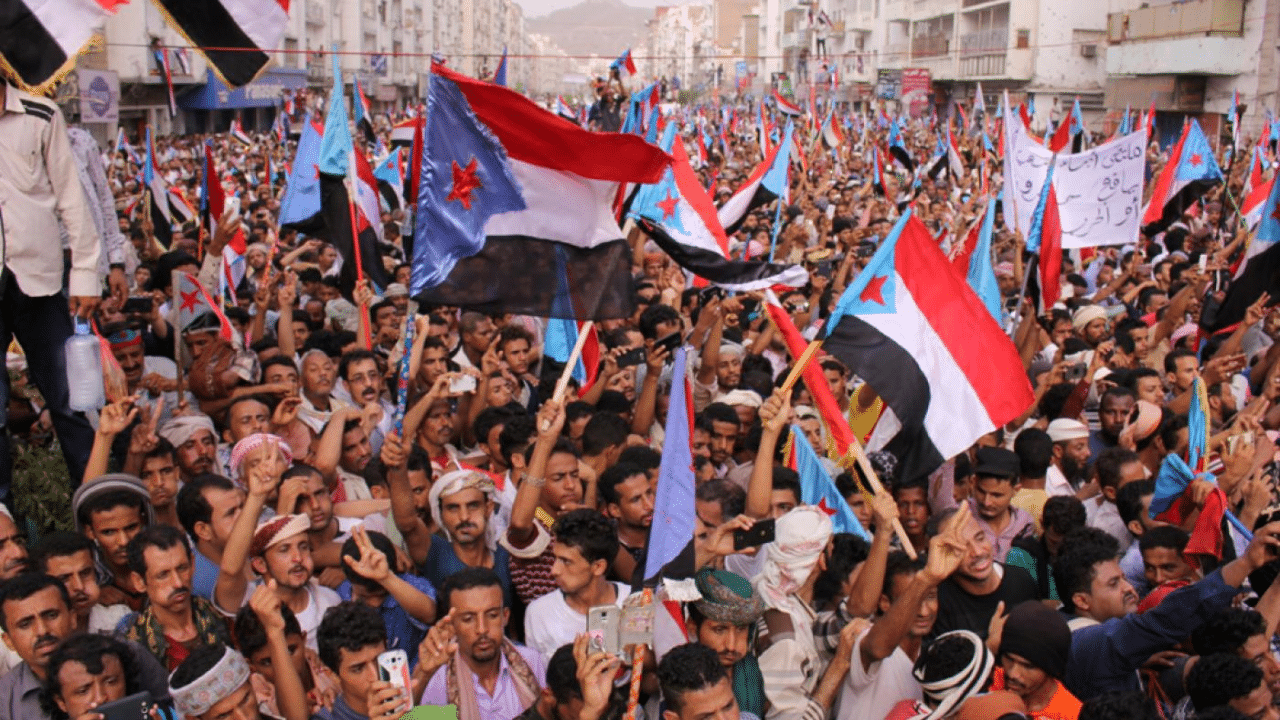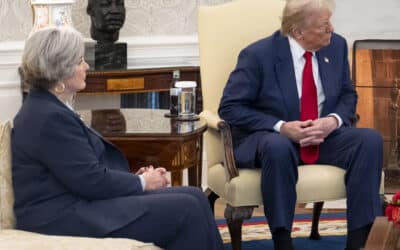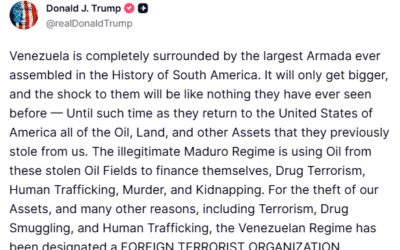The UAE-backed National Assembly of the Southern Transitional Council (STC) called on its forces to secure a military takeover and annexation of the entirety of Yemen’s southern territory during a meeting on Monday, the Arab Weekly reported. The STC is intensifying its push for secession, seeking a partition corresponding with the borders of the former states of North Yemen and South Yemen, which existed prior to the country’s 1990 unification.
The latest STC meeting follows the group’s signing of a “national charter,” which called for “the restoration of the state of the south with its political and geographical borders according to what was before May 22, 1990.”
Not coincidentally, the STC’s call for a takeover of the whole of what was formerly South Yemen coincided exactly with the 33rd anniversary of modern Yemen’s founding. The National Assembly insisted the STC must “complete its military and security control over all southern territories and remove the remnants of the Yemeni forces.”
The secessionists’ plans to seize the remaining southern territory which they do not yet control seeks to take advantage of the current regional situation, according to analysts cited by the Arab Weekly. After eight years of the brutal US-backed war, the country is experiencing a period of relative calm, with peace talks between the Saudis and the Houthis still ongoing.
For well over a year, there have been no reported Saudi bombings in Yemen, nor retaliatory strikes by the Houthis on Saudi territory. The truce is the result of a ceasefire agreement established between both sides, which officially held from April to October 2022. In February, for the first time since 2016, general cargo ships docked in Yemen’s Red Sea port of Hodeidah. The current talks are paving the way for an extension of the ceasefire and an eventual settlement.
The Houthis have won the war, for all intents and purposes, and have held Yemen’s capital city since late 2014, before Riyadh launched its bombing campaign. The Zaydi Shia group now controls the vast majority of what used to be North Yemen, while the so-called internationally recognized government holds little power after coming under the control of the Saudi-backed Presidential Leadership Council (PLC) created last year. The STC’s leadership is represented in the new governing body, and believes it should have a significant role in any final settlement to the conflict in light of major divisions and weaknesses within the PLC.
Indeed, the analysts cited in the report suggest the STC has sufficient popular support, as well as military and political power, to pull off their planned annexation, cementing a rebirth of the old South Yemen. The STC has control over the governorates of Aden, Shabwa, Lahj, Al-Dhalea, Abyan, as well as parts of Hadramout and Socotra. The Al-Mahrah governorate, which borders Oman, and Wadi Hadramout province are still controlled by the PLC.
The Saudis and the Houthis are equally eager to end the war. An agreement on a partition seems possible given that the Saudis, and not the sidelined PLC, are negotiating with the Houthis directly. The expectation is that Riyadh will support practically any realistic settlement that allows it to finally extricate itself from the conflict.
However, as the Intercept’s Ryan Grim has reported, the Joe Biden administration “seems to be attempting to slow-walk and blow up the peace talks.” This is done under the guise of a benign desire for a ”comprehensive agreement” with an “inclusive government” which includes the defeated US and Saudi-backed proxies. Grim writes “the Saudis appear eager to get to a final deal, while the US keeps throwing up new conditions.” Tim Lenderking, the US special envoy for Yemen, and other officials have actively dampened optimism for peace.
At the same time, the Biden regime is plainly unwilling to apply its considerable leverage with Riyadh to seal the deal with the Houthis, for instance, by making an official pledge that there will be no further US support for the Saudi-led coalition whether fighting resumes or not.
Conversely, and perversely, administration officials seem to be more interested in a resumption of the catastrophic war. US officials have emphasized their willingness to support Riyadh if the fighting erupts again, which is a distinct possibility as there remains a Saudi blockade on north Yemen.
As the executive director of Just Foreign Policy, Erik Sperling, has explained, “It’s surreal to think that the Biden administration is more hawkish on Yemen than the brutal regime of Mohammed bin Salman, but that’s the current reality.”
He continued, “Lenderking has made clear that his primary goal is not ending the war… He would prefer the Saudis continue their brutal war and blockade against Yemen, even if it means endangering Saudi security, to a deal that legitimizes Yemen’s de facto authorities. The blood of Yemenis will once again be on US hands if he succeeds in his goal of scuttling the Saudi-Houthi deal and the war escalates.”
The US policy thus ensures the starving Yemeni people will be prevented from obtaining even subsistence levels of food, medicine and fuel. Yemen is the poorest country in the Middle East and 90% of Yemenis’ food is imported from abroad.
According to the UN, at least 377,000 people died as a result of the conflict between 2015 and late 2021. Of those, it is estimated that 150,000 were killed as a result of direct violence, while the remaining victims starved to death or perished from diseases linked to the blockade and the Saudis’ relentless bombing of civilian infrastructure. The US-backed coalition targeted farms, bridges, residential areas, hospitals, clinics, fishing boats, marketplaces, cholera treatment centers, food storage sites, water works, sewage facilities, roads and factories. The vast majority of these latter deaths have been infants and children under the age of five.
































